Badminton Racket Size Chart
| Category | Player Type | Racket Weight | Shaft Stiffness | Grip Size | Balance | Recommended Use |
|---|
Looking for the perfect fit? Check Out These Best-Selling Badminton Racket.
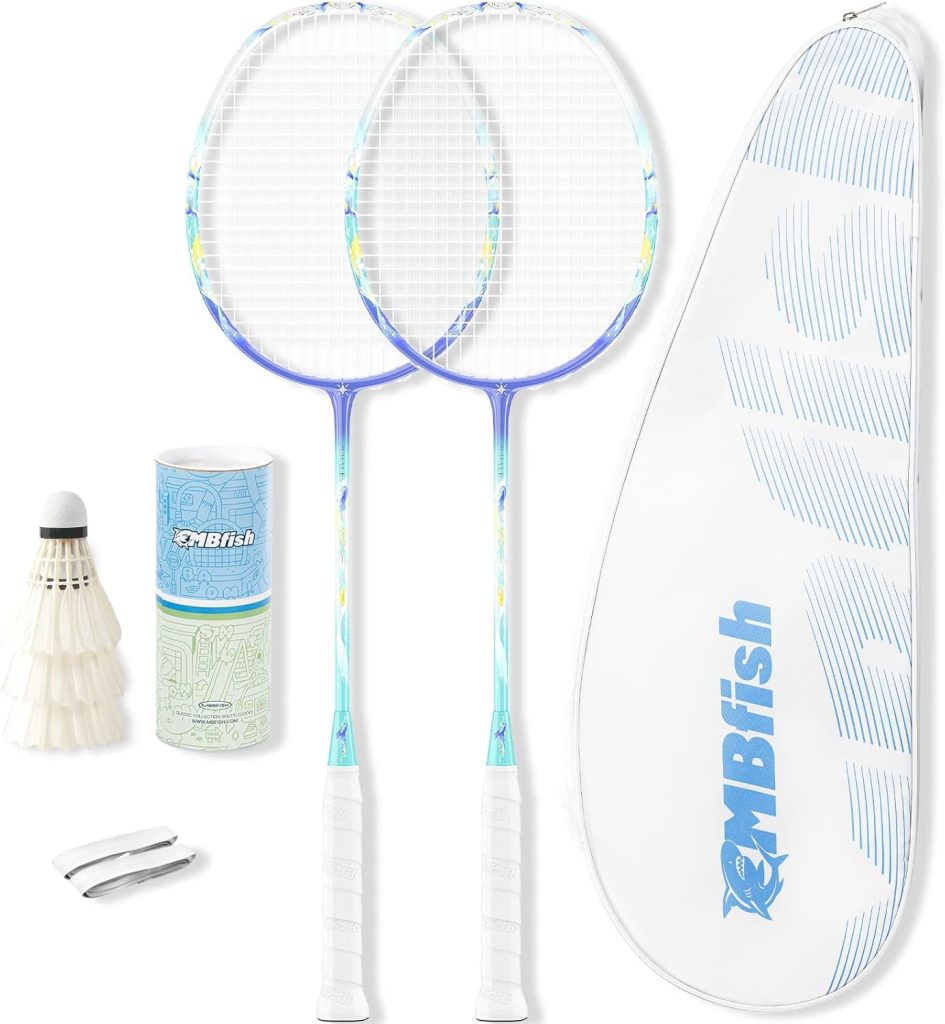
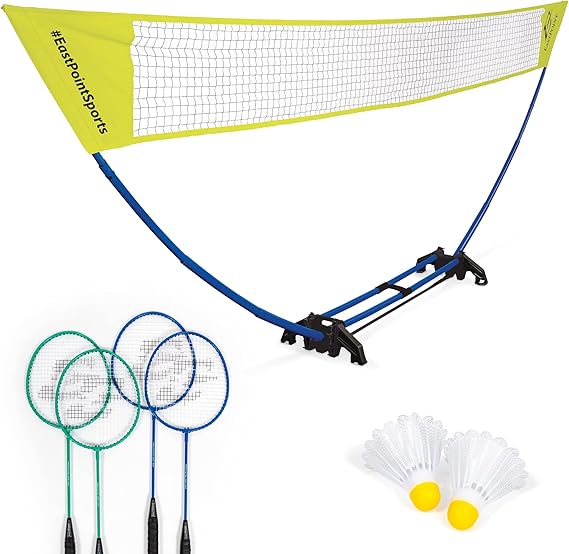
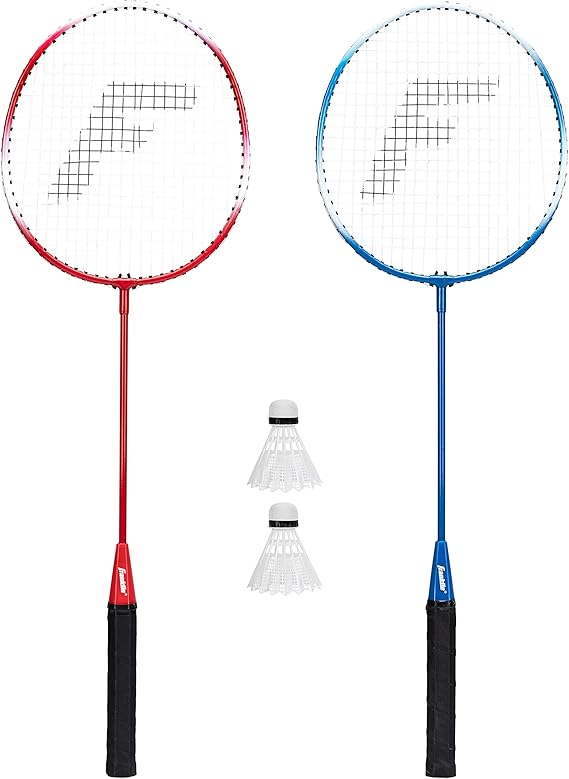
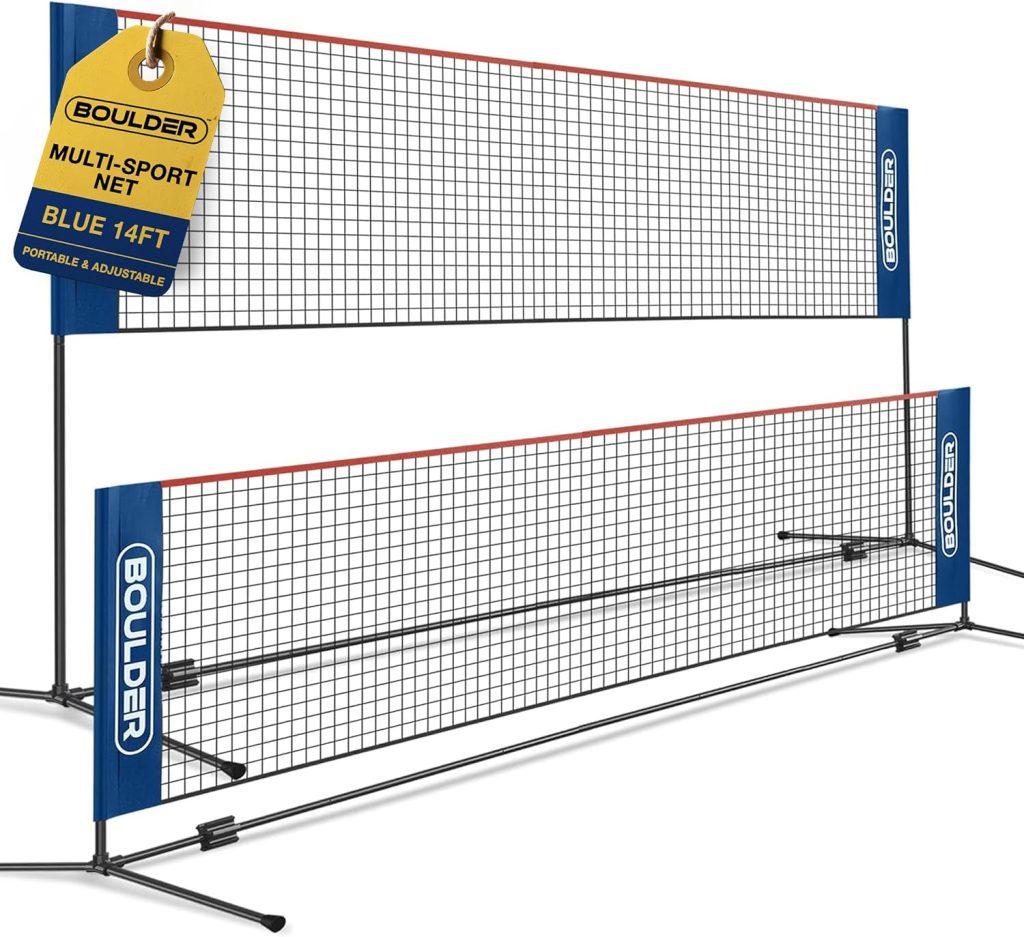
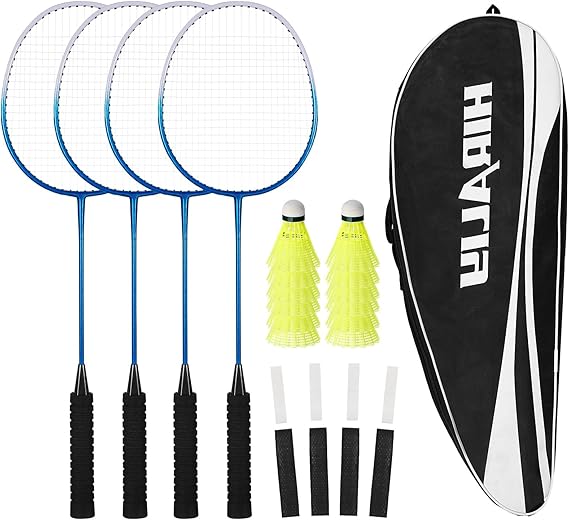
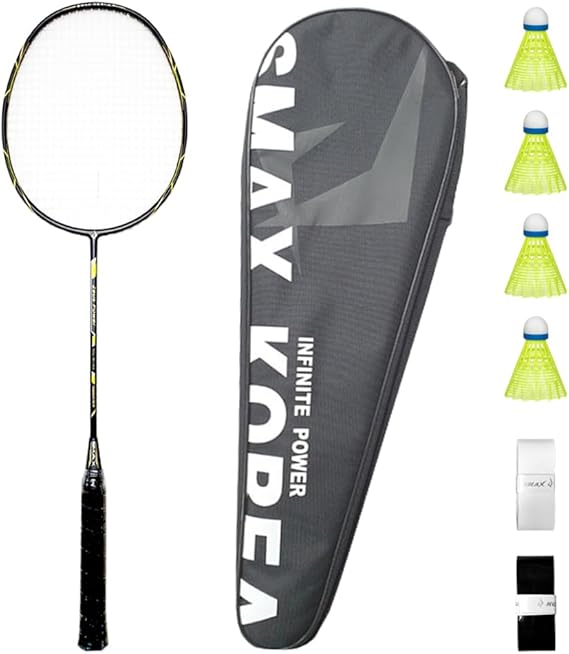
This interactive chart allows users to select the racket category based on player type or racket size and automatically displays the corresponding details.
Here’s a Badminton Racket Size Chart that details different racket specifications for various levels of play, including the type of player (beginner, intermediate, advanced) and the key factors such as weight, shaft stiffness, grip size, and recommended use.
Badminton Racket Size Chart
| Category | Player Type | Racket Weight | Shaft Stiffness | Grip Size | Balance | Recommended Use |
|---|---|---|---|---|---|---|
| Ultra Light | Advanced Players | 70–79 grams | Extra Stiff | G3, G4 | Even Balance / Head Light | Advanced, professional-level play for speed and agility |
| Light | Advanced / Intermediate Players | 80–84 grams | Stiff | G4, G5 | Even Balance / Head Light | Fast play, doubles, and defensive play |
| Medium Light | Intermediate Players | 85–89 grams | Medium Stiff | G4, G5 | Even Balance | Balanced for attacking and defensive play |
| Medium | Beginner / Intermediate | 90–94 grams | Medium | G4, G5 | Slight Head Heavy | All-around play, suitable for beginners transitioning to intermediate level |
| Medium Heavy | Intermediate / Advanced | 95–99 grams | Medium Flex | G4, G5 | Head Heavy | Power play, singles, offensive shots |
| Heavy | Advanced Players | 100–110 grams | Flexible | G5 | Head Heavy | Power shots, singles, and players focusing on smash shots |
| Extra Heavy | Power Players / Professionals | 110–120 grams | Very Flexible | G5 | Head Heavy | Professional, singles, aggressive and powerful smashes |
Breakdown by Racket Specifications
Ultra Light (70–79 grams)
- Recommended For: Advanced Players
- Shaft Stiffness: Extra Stiff (for quick reflexes and precise control)
- Grip Size: G3, G4
- Balance: Even Balance or Head Light
- Recommended Use: Best for professional-level play, focused on speed and agility. These rackets allow for fast swings, quick defense, and advanced techniques.
Light (80–84 grams)
- Recommended For: Advanced to Intermediate Players
- Shaft Stiffness: Stiff (provides control and faster recovery)
- Grip Size: G4, G5
- Balance: Even Balance or Head Light
- Recommended Use: Ideal for doubles play and fast-paced rallies. The racket offers quick reaction times and is good for defense and fast attacking shots.
1. Medium Light (85–89 grams)
- Recommended For: Intermediate Players
- Shaft Stiffness: Medium Stiff (a good balance of power and control)
- Grip Size: G4, G5
- Balance: Even Balance
- Recommended Use: Suitable for attacking and defensive play, with a balanced weight that provides both power and control. Ideal for intermediate players who want versatility in their game.
2. Medium (90–94 grams)
- Recommended For: Beginner to Intermediate Players
- Shaft Stiffness: Medium (a balance between flexibility and control)
- Grip Size: G4, G5
- Balance: Slight Head Heavy
- Recommended Use: An all-around racket suitable for both beginners transitioning into intermediate play and intermediate players. This racket offers a balance of control, power, and versatility, making it a good choice for various types of play.
3. Medium Heavy (95–99 grams)
- Recommended For: Intermediate to Advanced Players
- Shaft Stiffness: Medium Flex (for added flexibility and power)
- Grip Size: G4, G5
- Balance: Head Heavy
- Recommended Use: Ideal for power players who focus on singles and attacking shots. The heavier head provides more power, making it great for offensive play and smashes.
Heavy (100–110 grams)
- Recommended For: Advanced Players
- Shaft Stiffness: Flexible (for maximum power)
- Grip Size: G5
- Balance: Head Heavy
- Recommended Use: Suitable for players who focus on smashes and singles play. The heavier racket helps generate more power, and its flexibility aids in delivering powerful shots.
Extra Heavy (110–120 grams)
- Recommended For: Power Players / Professionals
- Shaft Stiffness: Very Flexible (for maximum power generation)
- Grip Size: G5
- Balance: Head Heavy
- Recommended Use: Used by professionals or players with a focus on aggressive and powerful smashes. The extra weight and flexible shaft help generate tremendous power in attacks.
Frequently Asked Questions
1. What is the standard size of a badminton racket?
A standard badminton racket typically has the following measurements:
- Length: 26 to 27 inches (66 to 68 cm).
- Head Size: The head of the racket should be within 11.5 to 12.5 cm in width.
- Grip Size: The grip size can vary from 3 to 5 (the higher the number, the thicker the grip).
- Weight: Most adult rackets weigh between 80 to 100 grams, but the exact weight can vary based on the material and design.
2. What racket size should I choose based on my skill level?
- Beginners: For beginners, a lighter racket with a larger head (head-heavy) is ideal for generating power and forgiveness on off-center hits. A weight range of 80-85 grams is commonly recommended.
- Intermediate Players: Players who have gained some experience may opt for a balanced racket (even balance) with a medium weight (85-90 grams) for better control and all-around playability.
- Advanced Players: Advanced players usually prefer rackets with a head-light balance and medium to heavy weight (90-95 grams or more), as they prioritize precision, speed, and control in their shots.
3. How do I determine the best grip size for my racket?
Grip size is a crucial factor for comfort and control. If the grip is too small, you may struggle with control, while a grip that’s too large can lead to discomfort or fatigue. The most common grip sizes range from G3 to G5, where:
- G3 is the standard size (most commonly used by adult players).
- G4 is suitable for players with slightly smaller hands.
- G5 is ideal for players with small hands.
To determine the best grip size for you:
- Hold the racket with your dominant hand.
- Use the index finger of your other hand to measure the space between your palm and fingers.
- Ideally, you should be able to fit your index finger comfortably in that space.
4. What is the difference between a head-heavy, head-light, and even-balanced racket?
- Head-Heavy Racket: A racket that has more weight towards the head. This design generates more power, making it a good choice for beginners or those who play a more offensive style of badminton. It helps generate momentum for smashing the shuttlecock.
- Head-Light Racket: A racket with more weight towards the handle. This design allows for faster reaction time and maneuverability, making it suitable for players who prefer defensive or quick rallies. It also provides better control for net play and drop shots.
- Even-Balance Racket: A racket that distributes weight evenly throughout the frame. It offers a balance between power and control, making it a versatile choice for all-around players who need a bit of both.
5. How do I select the correct length for my racket?
Racket length affects your reach and maneuverability. Most adult badminton rackets are between 26 and 27 inches long, which is suitable for standard play. However, you may want to adjust your racket’s length based on your playing style:
- Longer Rackets: Players who prefer extra reach or have a more attacking game may choose a racket length of 27 inches. This can help generate more power and extend your reach.
- Shorter Rackets: A racket around 26 inches is more maneuverable and easier to control, making it a great choice for those who play more defensive badminton or rely on quick reflexes.
6. How can I choose the best racket weight for my playing style?
Racket weight plays a significant role in your play style. The weight of the racket can range from 80 grams to 100+ grams. Here’s how to choose based on your style:
- Lightweight (80-85 grams): Ideal for beginners and players who focus on quick reactions and agility. Lighter rackets are easier to swing and are more forgiving.
- Medium Weight (85-90 grams): Suitable for intermediate players who need a balance between power and control.
- Heavyweight (90-95+ grams): Best for advanced players who prefer to generate power and have more control over their shots, especially when performing smashes and clear shots.
7. Is there a recommended racket size for children or junior players?
For younger or junior players, racket size is crucial for ease of play and comfort. Junior rackets are typically shorter, lighter, and come with smaller grip sizes. Here’s a general guide for selecting the right size based on age:
- Under 6 years old: A racket length of around 17-19 inches.
- 7 to 10 years old: A racket length of 20-21 inches.
- 11 to 12 years old: A racket length of 22-23 inches.
- 13 and older: Junior players over 13 years old can start using an adult-sized racket (26-27 inches).
As with adult players, juniors should choose a racket with a grip size that fits their hand comfortably.
8. How do I know if a racket is suitable for singles or doubles play?
The type of racket you choose can influence how well you play in singles or doubles. Here’s a basic breakdown:
- Singles Play: Players who play singles generally prefer rackets that offer a combination of power and precision. You might go for a racket with a head-light balance for faster reactions and control, especially for defensive shots.
- Doubles Play: In doubles, players often opt for rackets that offer more power for quick smashes and aggressive play. A head-heavy racket can help generate that extra momentum for offensive shots, though a well-balanced racket can work for versatility.
9. Can I modify the grip size of my badminton racket?
Yes, you can modify the grip size of your racket by adding or removing grip tape. Adding an overgrip can increase the size of the grip, while removing the grip tape or using a thinner overgrip can make the grip smaller. Keep in mind that altering the grip size may also affect your playing comfort and control.
10. Do different brands of badminton rackets vary in size?
While the standard dimensions for badminton rackets are generally the same across brands, small differences in the design or materials used may result in slight variations in weight, balance, and grip size. It’s always best to hold the racket in your hand before purchasing to ensure it feels comfortable.
Conclusion
Choosing the right badminton racket is all about understanding your needs, playing style, and comfort level. By using the guidelines above, you’ll be able to find the racket that best suits your game, whether you’re a beginner, intermediate, or advanced player.






